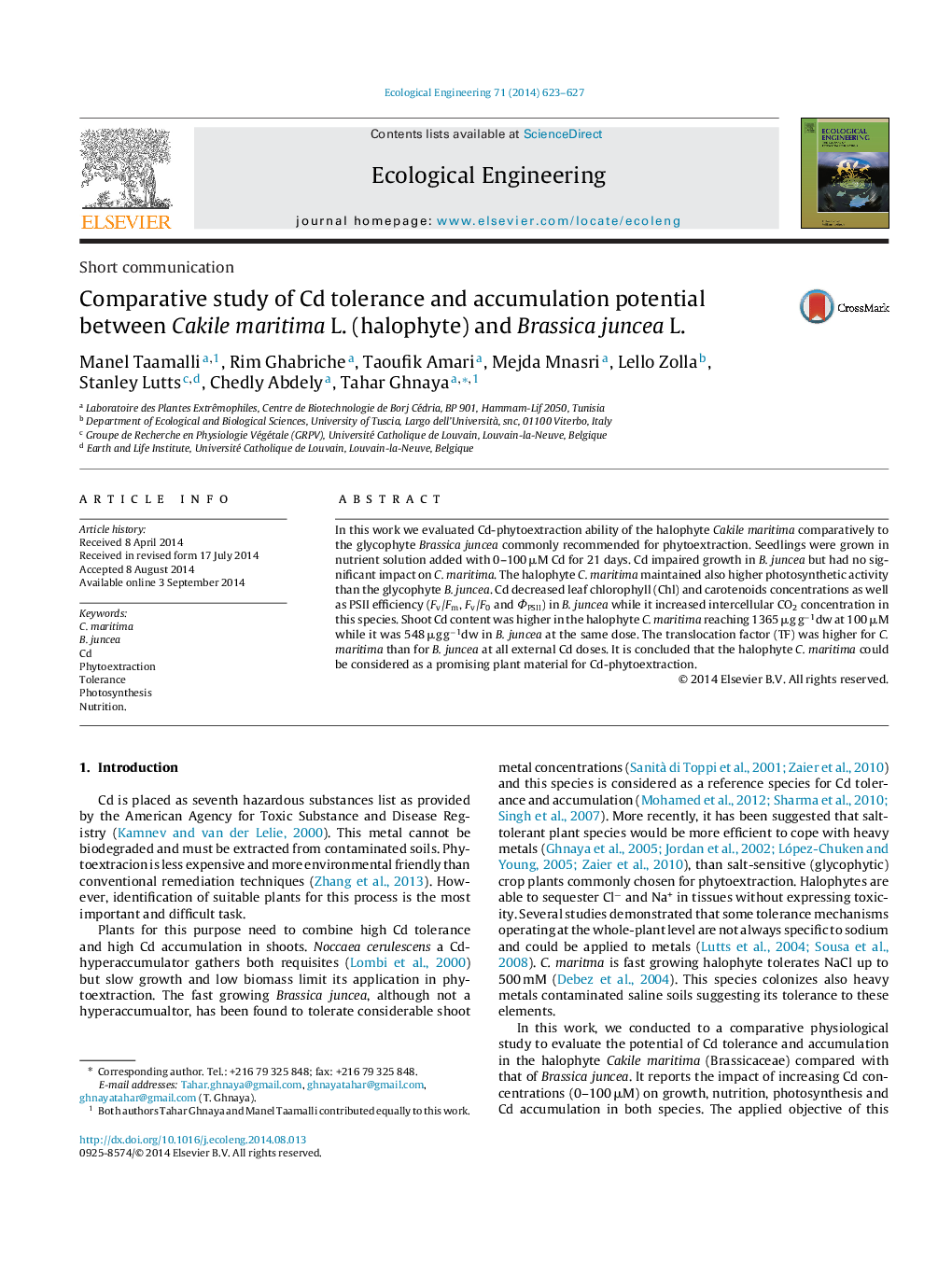| Article ID | Journal | Published Year | Pages | File Type |
|---|---|---|---|---|
| 4389204 | Ecological Engineering | 2014 | 5 Pages |
•The halophyte C. maritima tolerates better Cd than B. juncea.•C. maritima accumulates more Cd in the shoots than B. juncea.•Based on this, C. maritima is more efficient in Cd phytoextraction.
In this work we evaluated Cd-phytoextraction ability of the halophyte Cakile maritima comparatively to the glycophyte Brassica juncea commonly recommended for phytoextraction. Seedlings were grown in nutrient solution added with 0–100 μM Cd for 21 days. Cd impaired growth in B. juncea but had no significant impact on C. maritima. The halophyte C. maritima maintained also higher photosynthetic activity than the glycophyte B. juncea. Cd decreased leaf chlorophyll (Chl) and carotenoids concentrations as well as PSII efficiency (Fv/Fm, Fv/F0 and ΦPSII) in B. juncea while it increased intercellular CO2 concentration in this species. Shoot Cd content was higher in the halophyte C. maritima reaching 1365 μg g−1dw at 100 μM while it was 548 μg g−1dw in B. juncea at the same dose. The translocation factor (TF) was higher for C. maritima than for B. juncea at all external Cd doses. It is concluded that the halophyte C. maritima could be considered as a promising plant material for Cd-phytoextraction.
